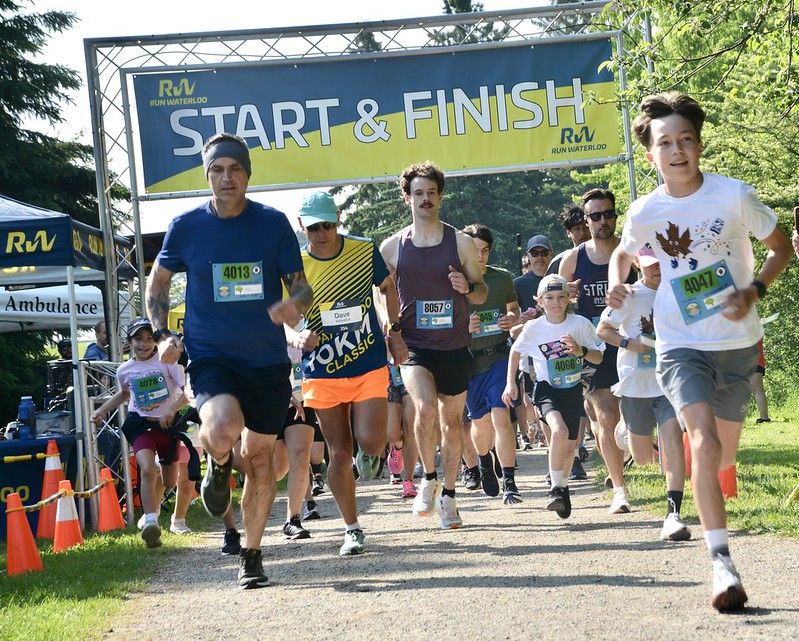For the 43rd Waterloo 10 KM Classic, we launched 10 mini-runs to meet a number of community goals. Seven families were awarded mini-sponsorships to add some “race” to their virtual runs. We also have a corporate group update coming later this week. But the final two were a different kind of special: elite men’s and women’s races.
Results from the elite race
Erin Mawhinney defended her title from 2019, and Mike Tate ran the fastest 10k in Waterloo since 2003.
31:14 Mike Tate Guelph
31:29 Adam Hortian Kitchener
32:39 Mark Patton Fergus
34:34 Daniel Fournier Waterloo
35:05 John McLean Cambridge
35:33 Jon Redfearn Waterloo
36:39 Erin Mawhinney Hamilton
39:13 Stephaney Hortian Kitchener
40:11 Carise Thompson Waterloo
The athletes battled a hot and muggy morning on a 2.9k loop without any water stations. More on that below.
Why we did it
Elite athletes are a small but important segment of our community, and we have always looked for ways to support them. In brainstorming creative approaches to the reality of distancing, we realized that we had an opportunity to create a controlled environment for a single, small race, for which elites were an appreciative audience.
How we did it
We took strict precautions with specific protocols, including not announcing the event to the public. If you’re just hearing about this now, then it worked! We “gathered” for a 7:30am “race” on Sunday, June 21.
We only invited local (Waterloo/Wellington) athletes, with the exception being Erin (from Hamilton) as the defending champion. We tried to keep the field to 10 runners, and we limited the race crew to four (lead cycling, timing, photo, video). All participants and volunteers passed the provincial screening questionnaire.
There was no course infrastructure, no venue, no washrooms, and no social element. There was no course aid (no water), and the only point of contact was distributing masks, which were mandatory from the start line for the first 300m.
All individuals outside bubbles were required to keep 2m distance at all times, including on the start line (a grid was specifically measured), and during the race. With 10 athletes, passing was minimal, but the passing athletes were required to take the extra space to pass.
What’s next
So that’s how and why we did this. We were thrilled by the quality and engagement from the field. We think the concept worked pretty well, and it has us contemplating the paradox of ways we can scale this concept in a time when groups are forbidden and safety is paramount.
It was tough for us to not be able to extend the elite field to masters, which is an important demographic for us and is well-represented locally. But we were focused on a compact environment.
It was awesome to get to race again. Amazing job by @RunWaterloo putting this together with all the uncertainties and variables in today’s world! https://t.co/Bk4YEtoDwj
— Mike Tate (@mike_tate12) June 24, 2020









